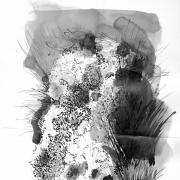40 years since the end of rum issue in the Royal Navy, Commander Roger Paine tells how rum first came to be issued to sailors, then banned altogether
40 years since the end of rum issue in the Royal Navy, Commander Roger Paine tells how rum first came to be issued to sailors, then banned altogether
As every Westcountry sailor worth his salt knows, rum is inextricably linked with the sea and the Royal Navy. Yet not a glass of it has been regularly issued to Her Majesty’s sailors since 31 July 1970 when sailors in ships and establishments in the Plymouth area said farewell to the last issue of ‘Nelson’s Blood’ by conducting mock funerals and wearing black armbands. It was called Black Tot Day, and the anniversary has been known by this name ever since.
Originally it was the poor quality of beer onboard ship and the difficulties of keeping fresh water that led to the issue of rum. The captain of HMS Greyhound in Port Royal, Jamaica, complained to the Admiralty about the lethargy of his crew in helping to build a new jetty. On 14 February 1727 he wrote:"‘If anything can make life agreeable to them, it may be a double allowance of rum being joined to what extra pay may be thought proper.’ As his ship’s company was already receiving half a pint of rum per man per day as an alternative to their allowance of beer, the captain’s recommendation implied that his men should have a pint of rum every day to make them work harder!
The first official approval to issue rum on a daily basis was given in 1731, and soon the practice of daily rum issue had become widespread, especially on ships deployed to the Caribbean. The rum was drunk undiluted and led to drunkenness and accidents at sea. Vice Admiral Edward Vernon, as Commander in Chief of the West Indies Station, was appalled at the fleet’s drunkenness. In 1740, he ordered that: ‘Whereas the pernicious custom of the seaman drinking their allowance of rum in drams [ie neat] is attended by many fatal effects to their morals as well as their health, the daily issue of half a pint is to be diluted with a quart of water to be mixed in the presence of the Lieutenant of the Watch’.
The Navy Minister, Dr David Owen, was reluctant to be involved in what he perceived as a vote-losing act with serving sailors and ex-matelots, many of them in his Devonport constituency
This mixture immediately become known as ‘grog’ due to the Admiral’s nickname ‘Old Grogram’, so called because he wore a boatcloak made of grogram (grosgrain), a coarse waterproof mixture of mohair and silk. The issue was permitted twice per day, at noon and sunset. As a result, drunkenness became less prevalent and the rate of sickness was reduced.
In the years that followed, grog-drinking spread as more ships from the West Indies arrived back in England with full casks of rum in their holds. It also became necessary to have a separate stowage where the neat rum could be safely stored. This compartment, which became known as the Spirit Room, was built into every warship constructed for the next 200 years.
In 1824 Admiral Lord Keith recommended the issue was reduced further to one of gill of rum, to which was added two equal parts of water, which was issued once per day. It was this ration, although later reduced in 1850 to half a gill (equal today to an eighth of a pint) that continued to be issued until 1970. Then, due to the increased technological complexity of ships and naval warfare, a campaigning parliamentary lobby recommended that the issue of grog to sailors and neat spirit to officers should be discontinued in the traditional strength and quantity. However, abolition would be universally unpopular. The Navy Minister, Dr David Owen, was reluctant to be involved in what he perceived as a vote-losing act with serving sailors and thousands of ex-matelots, many of them in his Devonport constituency. So he proposed that a daily beer ration should be provided to junior ratings, and that chief and petty officers should be permitted similar drinking privileges to those that officers had always enjoyed.
He also argued that the equivalent of three pence per day, which was the sum paid to those sailors who did not ‘draw a tot’, should be paid by the government for every rating serving at the time. This, together with �2.7million provided by the Treasury, to compensate for the purchase of rum from traditional sources, was used to set up The Royal Naval Sailor’s Fund. This ‘Tot Fund’ helps finance a range of sporting and welfare amenities for sailors.
The task of informing the Royal Navy that the issue of rum was finished, after nearly 230 years, fell to the First Sea Lord, Admiral of the Fleet Sir Michael Le Fanu. He nicknamed himself ‘Dry Ginger’, not least because of his sandy hair and this historic act of temperance. He signalled to the fleet that:"‘Most farewell messages try to tear-jerk the tear from the eye, but I say to you lot, very sad about tot, and thank you, good luck and goodbye’.
The Board of Admiralty introduced the compensatory measures already approved. Then, in 1979, the Board sanctioned the sale of the special blending formula to an American millionaire businessman, Charles Tobias, together with the distillery in Tortola in the British Virgin Islands, which had supplied rum since the early days. Tobias now markets the rum world-wide as Pusser’s rum using the White Ensign as his company’s logo. He also makes a royalty donation to the Tot Fund for every case of Pusser’s rum sold.
Only retired sailors now recall rum’s sacrosanct traditions. The issue of rum and grog, like so many naval customs had a time-honoured routine as well as its own special vocabulary. The expression ‘splice the mainbrace’ was used when an extra tot was issued to every person serving onboard or possibly the entire fleet.
In the same way that old salts would mutter ‘Stand Fast the Holy Ghost!’, on hearing the trill of the boatswain’s call and the hallowed words ‘Up Spirits!’, announcing that the rum issue was taking place, so all such phantoms are now permanently laid to rest.


























